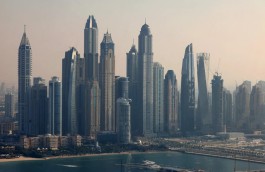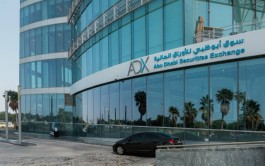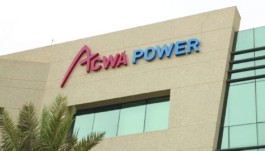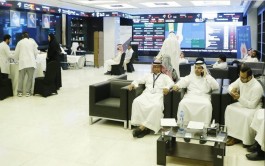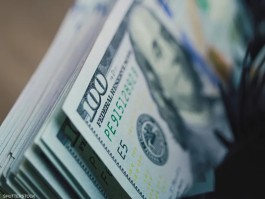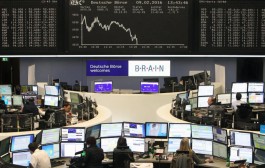With a massive two-phase expansion underway and a major new project about to start, Qatar is poised to control a quarter of global LNG production by the end of the decade, as well as an increasing share of the world’s influence and wealth.
Qatari Energy Minister Saad al-Kaabi on Sunday unveiled plans to increase production capacity by another 13%, adding to previously announced projects, boosting the country’s LNG output from 77 million metric tons per year today to 142 million tons by 2030.
That puts the state, with a population smaller than Mississippi, on track to produce natural gas equivalent to 7.25 million barrels of oil a day, most of which will be exported. That’s comparable to oil shipments from Saudi Arabia, the region’s reigning energy giant.
And it may not stop there.
Betting on high demand
Al-Kaabi revealed this during a press conference in which he also said: “We will continue our assessments. If there are additional quantities available to produce, we will produce more.” He believed that the only thing that might prevent Qatar from expanding production further is the lack of demand for this expansion. He added: “We believe that there is a huge market available.”
As Qatar grows its LNG exports, the country with one of the world’s highest per capita GDPs stands to cash in even more. Hydrocarbons, including LNG, accounted for about 44% of Qatar’s gross domestic product in 2022, according to Moody’s estimates. Once the expansions are in place, the extra shipments will boost annual revenue by about $31 billion, according to Bloomberg calculations based on recent long-term contract prices that assume oil at about $80 a barrel.
Al-Kaabi confirmed, in an interview with Bloomberg, that the new revenues will be in the range of tens of billions of dollars, without mentioning a specific amount.
In short, the new expansions will help make Qatar one of the richest countries in the world.
Long term contracts
Al Kaabi continued: “We are a gas exporting country. We do not have any other similar revenues. We have to make sure that our children, grandchildren and even the current generations will be in a better situation.
Fifty years ago, Qatar was largely seen as a fossil fuel backwater compared to its Gulf neighbors, Kuwait, Saudi Arabia and the United Arab Emirates. But Qatar’s North Field, part of the world’s largest gas reservoir, was discovered in 1971, but producers were more interested in finding oil at the time. Little was done to develop the gas field until the country completed its first liquefied natural gas (LNG) export facility in 1996.
Now, Qatar’s out-of-the-box plans for LNG will cement its position for decades to come in the world’s fastest-growing fossil fuel market.
Countries moving away from oil or coal but struggling to rely on renewable energy are looking for alternatives, and Qatar’s long-term contracts will secure supplies of liquefied natural gas beyond 2050.
About 20 countries, from India to Italy, have already signed long-term deals to buy seaborne gas from state-owned QatarEnergy, with more buyers likely to emerge.
Mixed expectations
Qatar is looking strategically at growing its market share and encouraging global gas demand growth over the long term, said Steven Wright, associate professor at Hamad Bin Khalifa University. As the world’s largest LNG player, TAQA has a longer-term calculus, he said.
Although Qatar is betting tens of billions of dollars that natural gas will be the most sustainable primary fuel market amid the energy transition, others say the outlook is not so rosy.
The International Energy Agency expects gas demand to peak in all scenarios by 2030; even global energy giant Shell has said gas consumption has already passed its peak in some markets including Europe and Japan, based on its interpretation of Wood Mackenzie data. Continued attacks by Houthi rebels on ships transiting the Red Sea in response to Israel’s war on Gaza also threaten to jeopardize the region’s exports.
Likewise, Qatar will only reap the windfall if it can successfully sell its extra production. Unlike U.S. LNG projects, which are not started until they have met customer demand for 10 years or more, Qatar has been financing construction without full assurance that demand will be met.
For much of 2023, Qatar’s new contracts lagged sales outside the U.S., a trend some attributed to inflexible contract terms, including large volumes, long timeframes and strict delivery rules. However, by the end of 2023, customers were back. Qatar signed the most deals among suppliers in the fourth quarter, outpacing the U.S. for the first time since early 2021, BloombergNEF data showed.
Benefit from the American decision
Meg O'Neill, chief executive of Woodside Energy, Australia's largest LNG exporter, said customers wanted one thing from Qatar: a large production volume that was usually highly predictable.
The recent US decision to halt approval of new export permits for LNG facilities amid a backlash from climate-conscious voters has also made Qatar look increasingly attractive from a supply stability perspective.
The halt, which depends on the outcome of the upcoming US election, will not affect any plants already under construction or in operation, but it threatens to delay some major US projects expected to reach the market at the end of the decade and beyond.
“This is a good opportunity for a major gas producer like Qatar,” said Bob McNally, chairman of Rapidan Energy Group and a former White House official, of the U.S. political move.
Political influence
The LNG expansion is expected to be well insulated from future energy price shocks. Fitch Ratings said last year that Qatar’s breakeven oil price, already the lowest in the Middle East, could reach $40 a barrel by 2026. Any further expansion in exports could push that figure down further. That’s far from the $80 or more Saudi Arabia wants.
The more capacity Qatar provides, the more it can limit future growth from other producers. Even if Qatar floods the market and LNG prices fall sharply, the well-funded Qatari company can withstand the consequences longer than many of its competitors.
geopolitical power
Qatar’s expanded role in the global energy trade will allow it to wield greater geopolitical power from Beijing to New Delhi, as well as across the Middle East. Qatar, a host of the 2022 World Cup and a global negotiator, insists it is not using its gas resources to advance a political agenda. More oil and gas revenue means more leverage for Qatar as a diplomatic player and as an outside investor, said Ben Cahill, a senior fellow at the Center for Strategic and International Studies.
The war in Gaza has thrust Qatar into the forefront of regional geopolitics because it hosts many of the political leaders of Hamas, which the United States designates as a terrorist organization. However, Washington has praised Qatar for being a key mediator between Israel and Hamas, and for helping to secure the release of some prisoners in Gaza.
Profits will fuel the country's investments.
The new LNG profits will be funneled primarily to the Qatar Investment Authority, or QIA, the country’s sovereign wealth fund. It’s a common practice for oil-rich Gulf states, including Saudi Arabia and the UAE, to invest heavily in fossil fuels and then use the revenues to fund other projects. In other words, countries are building the investments they’ll need to protect themselves from a world headed toward a future in which they don’t need as much oil — or none at all.
In recent years, Qatar has focused many of its investments on technology and healthcare opportunities abroad. About four out of five of Qatar’s investments last year were in the United States or India, key energy and political allies. Al-Kaabi said the fund would focus on having a diversified portfolio to achieve steady long-term growth, without disclosing details.
Qatar’s Emir Sheikh Tamim bin Hamad Al Thani always wants to make sure that the Qatari people are well taken care of, but he also thinks about the next generation, and making sure that through the Qatar Investment Authority we are investing enough for the next generation and building wealth for them, said Al Kaabi, who is also a board member of the fund. “There will be a lot of exciting things outside the country,” he added.
More competition
Because Qatar’s economy relies heavily on the sale of liquefied natural gas, Al-Kaabi often takes a personal approach to contract negotiations. He has been known to travel to India to iron out last-minute contract details, or to hold one-on-one meetings with major European energy companies.
When the 2011 Fukushima nuclear disaster forced Japan to shut down its reactors, Qatar came to the rescue with additional gas shipments. And when the Covid pandemic depressed Indian LNG demand in 2020, Qatar allowed the country to reschedule shipments, no questions asked.
Compared to when it first started exporting LNG in the 1990s, Qatar now faces much greater competition for the super-cooled fuel, particularly from the likes of American and Australian suppliers, as well as new entrants in Africa. While Qatar Energy is the single largest LNG exporter, the United States as a whole remains a bigger player in the industry, with several LNG operators sourcing gas from U.S. shale basins, including the prolific Permian.
Qatar Energy itself is the majority owner of the US Golden Pass terminal, which was originally built to import LNG and is now expanding to export it instead.
Amid increasing competition, Qatar is leaning into its reputation as a reliable supplier — albeit one with tighter terms — in the hope that its unique model will win customers over the long term.
Akshay Kumar Singh, chairman of Petronet LNG, India’s largest LNG buyer, said that in the past 20 years of imports from Qatar, the country has not missed a single cargo despite a lot of ups and downs. Not even a single cargo. Petronet renewed its contract with Qatar in February at better prices.
“You build your reputation over decades, and you can lose it over one shipment,” Al Kaabi said. “Credibility lasts a long time.”
